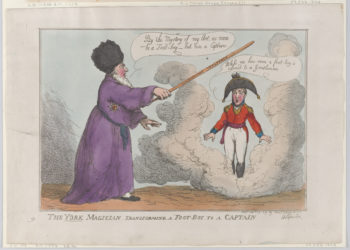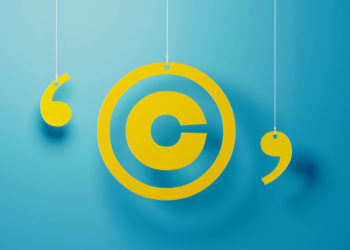The leadership of cOAlition S has the complex and unenviable task of stewarding a central set of policies that are unevenly adopted across the cOAlition membership and that at times interact in unexpected ways. Publishers, authors, librarians, and even the funders themselves struggle to articulate their interpretations of these policies and communicate clearly with other stakeholder groups. Over the past months, the policy documents related to Plan S have continued to grow in number as have the tools and resources for making sense of these documents. But, even these have not been enough.
That representatives of the cOAlition have taken to adding a standard disclaimer when they speak that, “if there is any discrepancy between information presented at this presentation and the cOAlition S website, the website takes precedence” is evidence of the complexity. To be clear, I think this is a useful disclaimer because on more than one occasion such discrepancies have occurred and so it is important that all know which are the canonical texts.
The Rights Retention Strategy is perhaps one of the most complicated pieces of the cOAlition’s policy regime. Unpacking each word — rights, retention, and strategy — is one approach to better understanding what this policy is and how it functions within the Plan S compliance framework overall.

Rights and Retention
The “rights” under consideration here are those rights that an author has in their work as the author of the work. Those rights are typically referred to collectively as “copyright.” The copyright that an author holds can encompass two types of rights: economic rights and moral rights. Generally speaking, economic rights encompass the ability to authorize or prevent certain uses of the work and to be compensated for such use, subject to limitations and exceptions such as fair use or fair dealing. The original author of a work — or in some cases their employer — is the original copyright owner. The WIPO copyright portal is a useful resource for additional background information on copyright fundamentals.
Many academic institutions have a tradition of treating at least some of their employees (e.g., faculty) as the copyright owners of works they create even if they could legally assert institutional ownership as an employer. As such, the Rights Retention Strategy (RRS) takes an all-encompassing approach. The RRS — like Plan S generally — applies to the author and/or their employer regardless of who owns the copyright given that both individuals and institutions have obligations to a funder’s grant policies.
To “retain” something is to keep something one has or, to say it another way, to stay in possession of it. In the case of the RRS, then, an author (or their institution) is keeping their copyright, presumably rather than transferring it to the publisher or to some other entity.
For simplicity, this essay uses “author” from this point forward to mean the copyright holder of a work, which may be the author or their employer, depending on the terms of the author’s employment.
Strategy
So what of the last word — “strategy”? Strategy here refers not only to an approach to retaining rights but also an approach to exercising the retained rights in a particular way in order to be compliant with Plan S. That is to say, the RRS is a strategy for author compliance via the retained rights; it is not only a strategy for retaining rights. Let’s unpack that further.
Plan S has three routes for author compliance, all of which depend on some copyright retention by the author. But, not all routes are available to all authors for all journals. Determining which of the routes are available entails analyzing the intersections of funder policies (which, it is important to note, may or may not themselves be in full alignment with Plan S), journal policies, and library-publisher contracts in force at an author’s institution. To say that this is complex is an understatement!
The RRS facilitates the second route: “subscription venues (repository route).” To use this route, an author complies with their funder’s Plan S mandate by depositing an author accepted manuscript (AAM) or the version of record (VOR) into a repository, with a CC-BY or other acceptable reuse license, with no embargo on availability.
At first glance, it seems that this route should be straightforward; however, the challenge of this route is paying for it. It would be relatively easy to follow this route by paying an APC to publish in a hybrid subscription journal and then, even if it might feel a bit redundant, depositing a copy of the VOR. But, cOAlition S funders will not pay such an APC. While some authors may have co-authors with funding that can be used for such an APC, which would enable depositing the VOR, many authors will not have alternative funding for the APC. In such a case, absent the author deciding to pay the APC personally, what remains of the second compliance route is for the author to license the AAM with a CC-BY or other acceptable reuse license and then deposit the AAM with no embargo for reader access. But, here too the author will likely face a barrier as a publisher’s author agreement for a closed access VOR typically requires the author to agree to an embargo of at least 6-12 months. It is this barrier that the RRS seeks to overcome.
Specifically, the “strategy” in the RRS policy is for the funder to require authors to assert — at the time of manuscript submission — that the author has applied a CC-BY license to the eventual AAM. By ensuring that the author applies a CC-BY license to the AAM, the funder’s strategy preserves the AAM option in the “subscription venues (repository route)” as the pathway for author compliance. CC licenses are irrevocable so, by the author having applied a CC-BY to the AAM, anyone who has the CC-BY licensed AAM can disseminate it, even if the author might later choose to no longer disseminate the document with such a license.
Elsewhere I have reflected that the RRS, like many other Plan S strategies, functions to “rehabilitate subscription journals into compliance” so that an author can still publish a closed article in a hybrid journal rather than the funder forcing the author to choose a fully open access journal for which their funder will pay an APC or an open access journal that does not charge APCs. It enables cOAlition S to assert that it is preserving author choice of publication venue; however, it is worth noting that this assertion does elide the fact that funders cannot mandate that publishers accept manuscripts with the RRS language.
Implementation
The Implementation Roadmap of cOAlition S Organisations provides the clearest look at the status of the RRS policy across the cOAlition. Specifically, of the 25 members of cOAlition S, 22 have reached their declared “launch date for implementing Plan S-aligned OA policy.” Of those, 13 have adopted the RRS, two have indicated that the RRS is “not applicable,” and seven have the status of “adoption to follow” for the RRS.
Nonetheless, for those authors whose funders have not adopted the RRS policy, cOAlition leaders have correctly pointed out that an author need not be mandated to incorporate this language into their submission in order to do so. Any author can themselves choose to place such a notice in their manuscript at the time of submission. The ability to assert the CC-BY license comes from being the copyright owner of the work; it does not derive from being funded by a funder that requires the assertion. The funder mandate requires the assertion to be made; it does not make the assertion possible.
Publisher Response
Publishers have made their opposition to the RRS quite clear. It is still unknown, however, whether their objections will be reflected in actions that reject manuscripts with the RRS language. Multiple publishers have told me off-the-record that they are likely to refer such manuscripts to their fully open access journals in what I have come to think of as a “route them, don’t reject them” response to the RRS. This is, of course, a response available only to those publishers that have both hybrid and fully open journals in a given disciplinary area, another way in which Plan S privileges publishers operating at scale or dominating in a particular field.
While the cOAlition initially attempted to gather information on publisher response to the RRS in order to populate its Journal Checker Tool (JCT), “of the 153 letters sent, only 28 publishers (18%) responded with an “actionable” response. Most publishers did not respond, and of those who did, many did not provide an answer which could be incorporated into the JCT.” Instead the JCT, which presents itself as a tool that “enables researchers to quickly identify journals or platforms that provide routes to compliance with Plan S,” does not indicate whether a publisher will accept manuscripts with the RRS language but rather if an author’s funder has adopted the RRS. Specifically, the cOAlition’s documentation explains that “the JCT is not asserting that the publisher policy supports the RRS. Rather, it indicates that the RRS allows researchers to self-archive the AAM with a zero-month embargo and a CC BY licence.” In other words, the author, who presumably wants to know what a journal’s policy is with respect to the RRS, cannot rely on the JCT to tell them this.
The cOAlition has said that it will update the JCT to reflect publisher policy rather than funder policy related to the RRS “if a publisher notifies cOAlition S that manuscripts which include the Rights Retention language will be rejected at submission.” In such cases, the cOAlition has also informed publishers, the JCT will then also no longer show any options for compliance route three: “transition of subscription venues (transformative arrangements).” This would be, I think, hugely demoralizing to librarians and publishers who have spent an immense amount of time and effort in the past year or two negotiating such contracts and especially for those librarians who have had to find additional financial resources to fund those agreements.
It is perhaps unsurprising then that “no publisher has indicated that they will systematically reject submissions because the submission includes the RRS language,” particularly since many publishers, especially the largest publishers, likely have in their portfolio both fully open access journals for which the RRS is already accommodated by the author agreement as well as subscription journals where it is not. And, for any given subscription journal, there are likely multiple versions of the author agreement (e.g., a variant to accommodate authors who are US federal employees) and so making a uniform statement about even a single journal may be difficult or even impossible.
The complexity here may be such that only a bespoke review of circumstances will clarify options for a particular author of a particular manuscript seeking to publish in a particular journal. The JCT itself is not fully reliable on journal policy, including the reality that there are journals that do accept manuscripts with the terms stated in the RRS but, because the author’s funder has not adopted the RRS, the JCT would not inform the author of this fact.
And, while publishers are trying to assist authors with funder mandates, they too can be challenged by the policy complexities of Plan S. As an example, a look back through the archived versions of the Springer Nature author guide for Plan S compliance illustrates multiple attempts to address the RRS and create clarity for authors. However, it seems the publisher eventually gave up altogether as the current version omits any mention of the RRS. Others, such as the American Chemical Society, forthrightly state in their Plan S information documents that “For authors selecting the subscription publication route, our standard self-archiving policies apply, including embargo periods.”
All of which leads me to conclude that publishers as a whole may not be systematically rejecting submissions with the RRS language but, with some notable exceptions, they are also not committing to systemically accepting them.
Another option I anticipate some publishers will be pursuing is to accept manuscripts with the RRS but then contractually limit depositing or other dissemination through the author agreement. Licensing a work CC-BY does not obligate one to disseminate it immediately. So, an author could license the AAM with a CC-BY via the RRS and still sign an author agreement promising to delay dissemination of it. Of course, an author agreeing to an embargo would be out of compliance with their funder’s mandate and not actually following route two; however, by the time that is discovered in a reporting and compliance audit process, the typical 6-12 month embargo will likely be near its end or have already ended and the work deposited, obscuring that there was non-compliance.
In conclusion, I would observe that the chess game continues. Ultimately, we may all be waiting on the next moves … which, to break my metaphor, will come as new players enter the game … those authors, who are — as of January 1 — subject to Plan S. Soon we will turn our attention to questions of author compliance with funder mandates rather than only looking at publisher policy responses.
Discussion
24 Thoughts on "Explaining the Rights Retention Strategy"
Authors will ignore Plan S mandates. They will publish in venues perceived to be important for the grant assessment criteria pushed by the very same funder imposing the mandate.
Plan S is a mess.
I have had occasion when we had face to face meetings to press Plan S spokespersons as to how many researchers they talked to before coming up with their plan. In particular it seems strange to me that they did not before they created the plan speak to any learned societies though more recently they have done – for example through Information Power done something to make up for this. I think the Anonymous posting is correct in what he/she says but maybe the fact that so many acceptable (compliant) journals now have decent impact factors will alleviate the need for a segment of the research community not to have to commit to one policy while in practice ignoring it.
“…the author has applied a CC-BY license to the eventual AAM…”
Can you legally apply a license to something that does not yet exist? What are the requirements around this to make it enforceable to the final version but not applicable to the draft?
I am not a lawyer but it appears that you can. I’d note that there are publisher agreements that already address the AAM as a separate copyright-able work — even though the AAM doesn’t exist qua AAM until the VOR is published — up until that point it is the, let’s say, presumed AAM (but it seems an author could at still replace the presumed AAM with another file that turns out to be the actual AAM). Of course, we won’t really know the answer to your question unless this gets litigated. But, and again, I am not a lawyer, I suspect one actually can do this.
A very useful analysis! I would be interested in hearing more about co-authors. Do they have any claim on copyright or other rights? Is there any need for them to assign rights in this context, if they have any?
That will vary by country. All co-authors automatically have copyright in the work they helped created. However, in some countries (including the US, if memory serves), every co-author has separate economic usage rights, so they don’t need to all consent to a specific agreement, though they do all need to receive their share of any compensation. This should mean that in such countries, any co-author could unilaterally assign a CC-BY license to a work, though not if they themselves have already transferred usage rights. In some other countries, co-authors have joint economic usage rights, so each cannot act without the others.
Regarding: “Of course, an author agreeing to an embargo would be out of compliance with their funder’s mandate and not actually following route two; however, by the time that is discovered in a reporting and compliance audit process, the typical 6-12 month embargo will likely be near its end or have already ended and the work deposited, obscuring that there was non-compliance.”
The same could be said of works that are deposited without embargo in compliance with Plan S but in contradiction of the publisher’s policy. By the time that publishers find the AAM and send the complaint, it’s likely that the the embargo will have expired.
True. And, I think at least the larger publishers may find those more quickly (as they have already been doing this, especially with copy posted to ResearchGate) and it will be even easier as the AAMs get increasingly linked in repositories via DOI data links to the VOR. Determining that something has been deposited (author agreement issue) is much less difficult than figuring out that it has not and should have been (Plan S compliance issue).
Kudos to Lisa for navigating this thicket.
I am still trying to figure out how a paper can exist with two different licenses. An author posts the AAM under CC BY. The publisher posts the VOR under publisher copyright or even a more restrictive creative commons license. If a commercial party wants to use a figure or a table from the paper, but one version is CC BY and the other CC BY-NC, what happens? Authors contact journals quite frequently complaining that one of their papers (typically under publisher copyright) has been ripped off and reproduced somewhere without their permission. Can the publisher of the VOR go after someone for copyright violation if the entire AAM is available somewhere under CC BY? If an author uses a figure in their paper and the original source is both CC BY for the AAM and under journal copyright with the VOR, do we have to ask them to go get permission from the journal?
That we perceive these two documents as “one paper” is the issue. Don’t think one paper but rather that, copyright/license-wise, they are two documents. Each document has a copyright/license that governs that document. In the specific case of the figure twice licensed, the commercial party can use the figure from the CC-BY document or they can seek permission to use the CC-BY-NC from the copyright holder (which may be the author or the journal/publisher depending) and the copyright holder can then either grant that for a fee or with no fee — or deny it. As to the “ripped off” … I am not a lawyer but I imagine that your success there would rely on proving that the “ripping off” came from the not-licensed VOR rather than the licensed AAM. Re the second figure question, you don’t need permission to use the CC-BY version and you do need permission to use the copyrighted VOR. All depends which document you are using because the copyright/license is for the document, not for the “paper” which we perceive as a single thing.
Clear as mud. This would require publishers to start allowing the citation of AAMs as a separate thing. Use of a figure, table, etc., from the AAM would need to indicate the source. And if that’s the case, likely an intext citation is needed. We would need to count three things (preprint, AAM, and VOR) to know usage and citation.
Well, I’d argue that the AAM should be cited as a separate thing. It is a separate thing. That is in fact the claim publishers are making when they say that the VOR is superior to the AAM … that they are NOT the same! And, yes, reproduction of figures needs to be specific re what is being reproduced. I don’t see either of those as downsides! As to counting to know usage/citation – yep. Of course you none of this is because of the RRS per se. We already have multiple cases where there is an “article” that exists as these three separate documents (or potentially even more as there may be more than one preprint!). But, I think we can handle this. Fields like Shakespeare studies have managed to figure out how to cite specific *printings* of the text or even the specific duplicate!
Yeah, I am not making a value judgement on whether they should be cited, just that when, where, from whom, etc., permission is needed is made more complicated. Journals staff can spend a lot of time in some disciplines ensuring that figures have the right credit line and asking the authors to verify re-use status of figures. I could see an author crediting an AAM with a link to the paper and a copyeditor updating to the VOR (as might be the policy about “unpublished” works) and now the journal is violating copyright somewhere. It’s a huge time suck for the journal staff.
Oh, definitely. This already happening updating from AAM or preprint citation to VOR. There are times when direct quotes end up cited to the VOR — where they don’t exist — bc the text was in a preprint but then not the VOR. Definitely time to get operations in place for handling this now because it will only grow (RSS or not it is going to grow but with the RSS it may grow faster!).
It seems the very fact that they are two separate (and sometimes different) documents can create further problems. Assigning CC-BY to an earlier version of a work constitutes a form of publishing (presumably why it is accepted under plan S). So one consequence would be that the publisher’s version is now legally a re-published work, and some publishing contracts stipulate that a work be original and not previously published.
How does assigning a CC-BY constitute a form of publishing? I just opened a Word doc and put a CC-BY on a text. It’s never been shared to anywhere. I can’t see how we could say that it is now published?
You are right, of course, you have to both assign the work and deposit in a repository for it to be “published.” On the other hand, assigning a license established a specific form that can be published. So what if you assign CC-BY to the AAM, publish a VOC under an agreement for exclusive usage rights to an original work, and only deposit the AAM after the VOC publication. Which version is original? One was “published” first but is a revision of the other.
A lot here depends on what is meant by AAM and VOR, and the precise language of the publishing contract. An AAM, typically, is the final manuscript before typesetting while the VOR is the final typeset document. One difference then is that the AAM won’t have the same pagination of the VOR. Also, the typesetting/proofs process generally results in some corrections, so the two texts are not necessarily identical, and the VOR might be more polished. In rare cases, it might have significant additions.
I was thinking about how the AAM doesn’t become the AAM until the publisher declares it to be the AAM — this is the version that is officially “accepted”. This creates another control point with potential loopholes to consider.
Is the distinction that until the publisher declares an AAM, any version you might assign a CC license to is just an unpublished manuscript, and depositing that would not meet the route 2 criteria under Plan S?
I guess that if RRS is to be an effective policy, then they need to specifically define what is required, as in, what qualifies as the AAM. As far as I can tell, that qualification currently resides with the publisher making the declaration that a particular version of the manuscript is “accepted” in its current form. If a publisher refuses to make that specific declaration or takes some other route, how does that affect RRS (as there is no “official” AAM)?
Plan S compliance can only be achieved under route 2 via the VOR or AAM. (Routes 1 and 3 rely on the VOR.) Any previous versions — which no doubt exist — cannot meet the compliance standard of route 2. Only AAM or VOR.
As to the publisher “declaration” … that makes it sound like some certification. Whereas it is probably better thought of as the status of that file as the AAM is “exhaust” from the publishing process. It just happens as a by-product of publishing the VOR.
Personally I wouldn’t want to hang too much off trying to split hairs over philosophical pondering of “what really is the AAM?” We see this terminology, for example, used by Crossref as well to say what is/is not eligible for a DOI (https://www.crossref.org/education/crossmark/version-control-corrections-and-retractions/). And, of course, there is a NISO standard on this (https://www.niso.org/publications/niso-rp-8-2008-jav)! Unraveling the meaning of AAM or treating it as somehow in dispute seems to me to likely be ultimately an unproductive pursuit.
Great analysis. What I am missing most of all in the entire debate is the real funder voice, with which I do not mean the representatives of Coalition S, who all seem to enjoy a degree of publisher distrust for various, maybe personal, reasons.
No doubt to most funders, RRS is just another way to maximize ROI. Open up a large body of research and hope it will spark innovation, support industry. Which begs the question what are the plans for this supposedly big batch of AMs (or VORs in some cases) that will become available? No use if not discoverable.
What is the real agenda of the RRS and who is pushing it behind the scenes?



